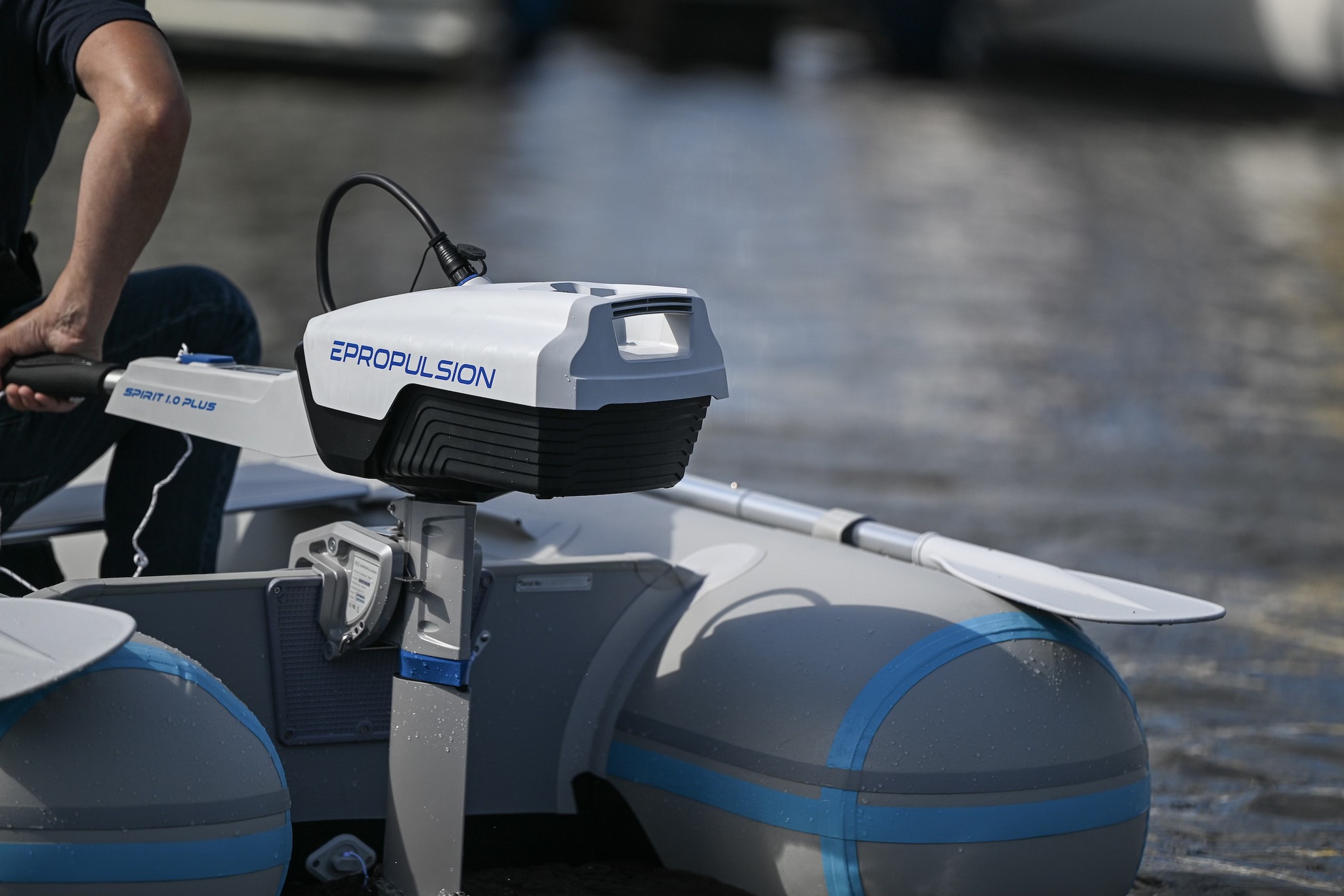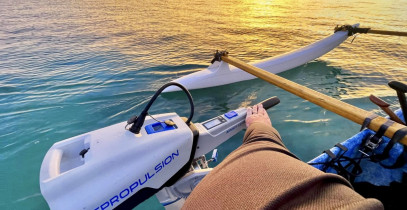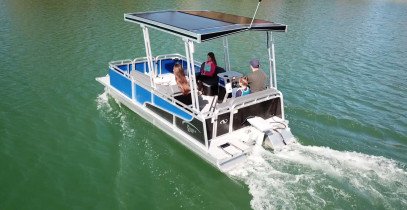
How Long Do Outboard Motors Last: A Newbie's Guide
How long do outboard motors last? 2 stroke vs 4 stroke, which one has better longevity? How many hours will a Honda/Yamaha/Mercury outboard motor last?
The average life of an outboard motor is important for a boat owner as it will greatly affect your vessel's value. It's also crucial to help decide if a motor has too many hours if you are looking at used motors.
In this post, we are going to explain everything concerning outboard motor life expectancy, so you can determine a good purchase easily.
Table of contents:
- Outboard Motor Life Expectancy
- What Impacts Outboard Motor Lifespan
- What You Can Do to Make Your Outboard Motor Last Longer
- How Many Hours Are Too Many Hours
- Essential Maintenance Tips for Outboard Motors
- Recognizing Signs of Wear and When to Replace

Outboard Motor Life Expectancy
Every owner wants their outboard motors to last forever. However, there is a limited lifespan for all marine engines.
So how many hours do outboard motors last? What's the average life of a boat motor?
A generally accepted lifetime rule of thumb is that an outboard motor can last about 1500 hours to over 4000 hours (if used and serviced regularly).
The outboard motor life will vary with different types of boat motors:
- The old 2 stroke outboards had an expected lifetime of 1500 hours, while the modern 4 strokes are expected to have 4000 hrs.
- An electric motor can last for tens of thousands of hours* (with battery replacement), with a notable increase over the 4,000 hour average of high-end petrol outboards.
- Inboards tend to have longer life expectancy with an upper lifetime range of around 5000ish hours if you maintain them well and they don't sit for long.
- The brand also matters. Outboards from big brands (Yamaha, Mercury, Honda, ePropulsion, etc) tend to have longer boat motor hours life.
*Electric outboard motors have a HUGE advantage when it comes to longevity since they need significantly less maintenance than their combustion counterparts. They are also less prone to mechanical failures.
For example, the ePropulsion electric outboards use brushless DC electric motors that can provide over 30,000 hrs of operating life.
However, beware of the limited battery life. You will need to replace the batteries after a certain number of charge cycles (anywhere from 3 to 10+ years depending on the frequency of use and type).
So remember to choose an electric motor with modern battery technology to prolong the outboard engine hours' life. For example, ePropulsion E-Series batteries are known to be long-lasting with over 80% capacity after 3000 charge cycles.
What Impacts Outboard Motor Lifespan
As you can see from above, there is no real way to know the exact outboard motor hours life as there are a lot of things to consider. Read the following top 4 factors to figure out the life expectancy of your desired outboard motor.
#1. How Outboard Motors Run
The secret to any engine life is proper usage. You might be surprised but most problems develop when they sit for months without use.
Also, the outboard working environment also matters. If the outboard motors are on a heavy boat, it will put more strain on the engine and can wear it out quicker.
Besides that, the average life of an outboard motor will depend on how hard you run it. For example, running at idle, mid throttle, and WOT will have different impacts on the engine lifespan.
#2. Maintenance Schedule
Maintenance and upkeep will significantly impact how long it will last.
It's very rare that an engine wears out. It's rarely heard that any outboard engines are naturally retired in its running condition.
Instead, the outboard motors are more likely to break before they reach their peak life hours (in theory), due to overheating, lack of oil, saltwater exposure, freeze damage, etc.
All the above mentioned matters can be avoided by proper maintenance (regular engine checkups, proper cleaning, and winterization) and therefore extend the outboard motor life expectancy.
One Tip: Getting electric outboards can save you tons of trouble on maintenance, providing extraordinary outboard motor lifespan with little effort.
#3. Quality and Brands
As we mentioned, 1,500 - 4,000 hrs is what modern outboard motors can get on average for lifespan (mainly about the powerhead) under proper maintenance.
However, different brands can make a slight difference here. So how long does a Suzuki/Honda/Mercury/Yamaha outboard motor last?
You can easily get that information on their official website. For example, a Yamaha outboard is said to last for 1,500 and up to 3,500 hours before needing a major overhaul or being replaced.
You may expect a similar outboard engine hours life with other big brand combustion outboard motors.
#4. Outboard Motor Types
As mentioned above, the outboard motor life expectancy varies depending on what kind of engine you have.
Generally speaking, an inboard, electric motor or 4 stroke outboard (if you prefer combustion motors) should last longer before they crap out on you.
It's always suggested to go for modern types and technologies if you want a long-lasting outboard motor with better experiences onboard.
For example, the 4 stroke outboard motors are quieter with better fuel economy, and engines are easier to find in better condition (if you are looking at a used one).
Better still, electric outboard motors are silent and clean with zero maintenance (for direct-drive motors) and much longer outboard motor life.

What You Can Do to Make Your Outboard Motor Last Longer
So how can you make your outboard last longer?
Here are the top 3 tips to help your outboard stay in peak performance and last forever.
#1. Flush After Each Use
Regular freshwater motor flushes are key to increasing your outboard longevity.
Remember to flush your outboard after every use, especially in saltwater. This can effectively prevent corrosion and extend the longevity of your water-pump impeller.
#2. Regular Maintenance
Regular maintenance is also crucial to extend the outboard lifespan.
You'd better change the engine oil and lower unit gear oil according to the manufacturer's recommendations (which is usually every 100 hours or once a year). Also, remember to lubricate the gears and bearings properly.
Things will be much easier if you go electric. You only need to check the anode and propeller regularly and replace them if necessary.
Further Reading: Click here to learn more about how to properly maintain your outboard to increase your outboard life expectancy.
#3. Proper Storage & Winterization
Winterizing your outboard is the best way to maximize its lifespan and prevent damage from freezing and corrosion.
There are some easy steps to follow to get your outboard winterized properly:
- Flush the outboard motor
- Change the lower unit gear oil and replace the oil filter
- Fill the gas tank (to 95% full) and add fuel stabilizer
- Fog the engine with lubricant
The storage position is also crucial:
When storing the outboard, it's best to be stored upright in a self-draining position (on an engine stand if possible). If it is to be stored on its side, ensure that the cooling system is drained completely.
How Many Hours Are Too Many Hours
If you are looking at used boats, you must be familiar with the boat motor hours life.
But how many hours on an outboard motor would it take to say no to a used boat?
What is considered high hours?
Some say 500 hours and others might say 1000 hours.
Is 300 hours / 900 hours a lot for a boat motor?
Some might say yes and others say no.
In fact, there is no single answer, and hours alone aren't always a good way to judge an engine about its condition.
So how to evaluate the health of the outboard motor? Here are some tips to help you settle on a good purchase:
- Check compression. When compression begins to drop on a cylinder, that's a reliable 'high mileage' indicator.
- Ask for maintenance records of the outboard motor. Maintenance is far more important than running hours. A high-hour outboard may outperform one with half the hours if it is taken care of properly.
- Hire a technician to come with you to check the technical conditions of the boat and motor (including the oil and fuel, spark, compression, etc).
- Check the boat/motor conditions in person. Always stay away from boats with issues that arise from neglect, such as seats in poor condition, random broken handles or latches, super dirty, etc. This can be a sign that the owner was not very attentive to maintenance.
Beware of the "low hours" trick (rather than "high hours").
Too few hours can also be an issue, as outboards are very likely to just sit around being neglected for years, and outboard motor parts can easily go bad if just sitting.
Therefore, stay away from extremely low hours on an older boat or boats that have sat for a long time.
Generally, 50-100 hours per year is typically a good range (not running too hard but still used enough) for a recreational cruising boat, and 50-60 hours for a one-season boat.
Personally, 500-1000 hrs seem reasonable and wouldn't bother me too much. Over 1000 is when I am starting to consider potential repower or maintenance costs.
Essential Maintenance Tips for Outboard Motors
Here is a checklist that walks you through the essential steps of how to properly maintain an outboard motor and make it last longer:
- Periodically check the fuel line for leaks or corrosion.
- Check the propeller and skeg for any damage (every 20 hours)
- Replace fuel filters and water separators (every 100 hours)
- Check the fuel tanks for damage and corrosion.
- Inspect spark plugs and grease moving parts (propeller shaft, tilt system, etc)
- Check regularly for water in the fuel.
Always check your outboard service manual and follow the manufacturer's instructions if you have any problems with the maintenance steps.
Recognizing Signs of Wear & When to Replace
An outboard motor can't last forever and it's normal to see wear and tear on your outboard with reduced efficiency and performance.
But how do you know it's time to replace your outboard motor?
Here are the top 5 recognizing signs that indicate it's time for a replacement.
- Sign #1: Reduced power & performance. If you can't get the desired speed and power you need any more, you might think about an upgrade.
- Sign #2. Persistent starting problems. If you find your outboard hard to start most of the time, it's a clear sign that there are some underlying problems to deal with.
- Sign #3. Difficult to find replacement parts. If you experience a lot of difficulty in finding the right replacement part for your outboard, you might need to consider an upgrade. This will greatly reduce the downtime and costs for repairs, which is good compensation for buying a new outboard.
- Sign #4. Serious physical damages. If you notice serious damage to your outboard (bent skegs, cracked engine hood, serious rust, and corrosion), it's time to have it checked thoroughly or replace it if necessary.
- Sign #5. Excessive vibration & overheating issues. Heavy vibration and overheated engines can cause a lot of trouble. A proper check or replacement at first signs can avoid serious injuries.









